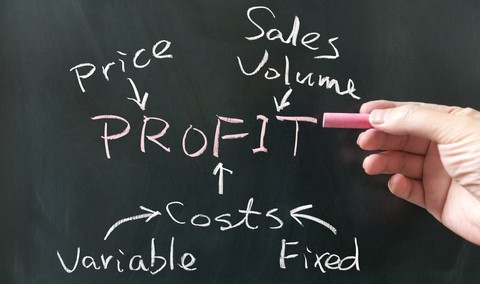You may have heard your accountant or your bank manager talk about fixed or variable costs, and wondered what they meant.

In this article, written exclusively for Company Bug, Emily Coltman FCA, Chief Accountant to FreeAgent – the popular online accounting system – looks at the different kinds of costs incurred by businesses, and how understanding these costs can help you run your own business more effectively.
What is a cost?
Let’s address this point first. A “cost” is a day-to-day running cost of your business – whether that’s something that the business pays for directly or whether you pay for it personally and the business pays you back. A cost might be something like letterheads for your business, or fees that you pay to your accountant.
Fixed costs
Fixed costs are costs that always stay the same, no matter how much your business makes, or how much it sells.
Examples of fixed costs would be the rent of an office or factory, or wages for staff who are paid a salary rather than per hour worked.
Variable costs
Variable costs are ones that change with the volume of goods or services that your business makes and sells.
For example, if you run a cleaning business and have staff who go out to clean your customers’ houses, you may pay them per hour. That’s a variable cost, because the more houses your staff are cleaning, the more your business earns in sales, and the more you will pay your staff.
Another variable cost might be the postage costs of items that you’re selling, because the more you make and sell, the more you will pay to your couriers for delivery.
Stepped costs
A “stepped” cost is a fixed cost that goes up by “steps” over time.
For example, a business renting warehouse space would pay a flat monthly rent, so that’s a fixed cost. But if that business needed more space, it would need to rent an extra warehouse, so the cost of rent would go up by a step.
Mixed costs
“Mixed” costs have both a fixed and a variable element. The classic example of that is a phone bill. The fixed element is the line rental, and the variable element is the call charges.
Putting the theory into practice: Break-even point
So what is the point of all these concepts? How do they help you to run your business?
Here’s one example:
Being able to separate your fixed costs from your variable costs allows you to calculate a very useful figure; your business’s break-even point. If you sell goods, or if you sell your services priced as units, the break-even point is how many units you need to sell in order to cover all your costs.
For example, Mark is an IT consultant. He charges for his services in blocks of half a day at a time, so half a day is his unit. Mark charges £300 per half day, and his variable costs per half day, such as travelling to clients’ premises, food for while he is on site, and call charges for his mobile phone, amount to £180. Mark also has fixed costs such as his phone rental, accountancy fees and bank charges, which amount to £1,500 per month.
Mark wants to know what is break-even point is, or how many half days he has to work in order to cover all his costs.
To do this, he takes his selling price per unit and subtracts the variable costs per unit, giving a figure called his contribution per unit. This is £300 – £180 = £120.
He then takes the figure for his total fixed costs and divides that by his contribution per unit. £1,500 / £120 = 12.5.
Mark must therefore work for 12.5 half days in order to cover all his costs, so 12.5 half days is his break-even point.
This is useful because Mark now knows that if he only has one week of work booked each month (10 half days), he will not cover all his costs and will need to get some more work into the diary!
Further Information
FreeAgent provide an award-winning online accounting system designed to meet the needs of small businesses, freelancers and contractors. Try it for free at www.freeagent.com


Follow Company Bug